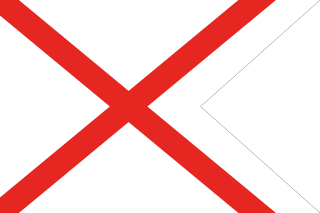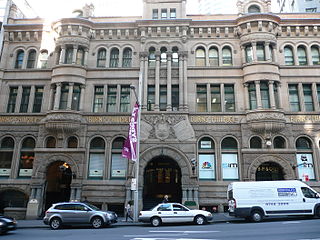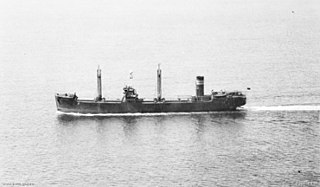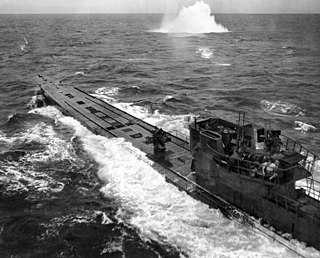
British India Steam Navigation Company ("BI") was formed in 1856 as the Calcutta and Burmah Steam Navigation Company.

CP Ships was a large Canadian shipping company established in the 19th century. From the late 1880s until after World War II, the company was Canada's largest operator of Atlantic and Pacific steamships. Many immigrants travelled on CP ships from Europe to Canada. The sinking of the steamship RMS Empress of Ireland just before World War I was the largest maritime disaster in Canadian history. The company provided Canadian Merchant Navy vessels in World Wars I and II. Twelve vessels were lost due to enemy action in World War II, including the RMS Empress of Britain, which was the largest ship ever sunk by a German U-boat.
I-8 was an Imperial Japanese Navy Junsen III -type submarine commissioned in 1938 that served during World War II. Designed as submarine aircraft carriers, I-8 and her sister ship I-7 were the largest Japanese submarines to be completed before the outbreak of the war in the Pacific in 1941. With embarked floatplanes, I-8 participated in operations related to the attack on Pearl Harbor, patrolled off the United States West Coast, and took part in the Guadalcanal campaign and the Okinawa campaign.

Burns Philp was once a major Australian shipping line and merchant that operated in the South Pacific. When the well-populated islands around New Guinea were targeted for blackbirding in the 1880s, a new rush for labour from these islands began. James Burns and Robert Philp purchased several well-known blackbirding ships to quickly exploit the human resource in this region, and Burns Philp entered the slave trade. The company ended its involvement in blackbirding in 1886. In later years the company was a major player in the food manufacturing business. Since its delisting from the Australian Securities Exchange in December 2006 and the subsequent sale of its assets, the company has mainly become a cashed up shell company. It is wholly owned by Graeme Hart's Rank Group.

Hong Kong and Whampoa Dock was a Hong Kong dockyard, once among the largest in Asia.

Cory Environmental is a large resource management, recycling and energy recovery company in the United Kingdom. Cory operates in nearly 40 locations throughout England, providing services in the collection, recycling and disposal of waste.
Storaa was a 1,980 GRT cargo ship which was built in 1918 by the Greenock & Grangemouth Dockyard Company as Wellpark for British owners. In 1927, she was sold to Belgium and was renamed Navex. A further sale in 1937 saw her renamed Prina. In 1938, she was sold to the Netherlands and was renamed Willy. In 1939, she was sold to Denmark and was renamed Storaa.

SS Iron Knight was a bulk carrier that was built in Scotland in 1937 for the Australian Broken Hill Pty, Ltd (BHP) to carry iron ore. A Japanese submarine sank her by torpedo off the coast of New South Wales in 1943, killing 36 of her crew. A wreck that was identified as that of Iron Knight is protected by the Australian federal Underwater Cultural Heritage Act 2018.

SS City of Johannesburg was a British cargo steamship that was sunk in 1942. She was built by Barclay, Curle & Co, of Whiteinch, Glasgow for Ellerman Lines Ltd, of London in 1920, being launched as SS Melford Hall. She was renamed SS City of Johannesburg in 1926 and registered in Liverpool.

The Cameron-class steamships were a class of UK cargo twin-screw steamships. They were designed for Clan Line and were also used by Scottish Shire Line and the Royal Navy.

The Gruppe Monsun or Monsoon Group was a force of German U-boats (submarines) that operated in the Pacific and Indian Oceans during World War II. Although similar naming conventions were used for temporary groupings of submarines in the Atlantic, the longer duration of Indian Ocean patrols caused the name to be permanently associated with the relatively small number of U-boats operating out of Penang. After 1944, the U-boats of the Monsun Gruppe were operationally placed under the authority of the Southeast Asia U-boat Region.
SS Automedon was a Blue Funnel Line refrigerated cargo steamship. She was launched in 1921 on the River Tyne as one of a class of 11 ships to replace many of Blue Funnel's losses in the First World War.
An Empire ship is a merchant ship that was given a name beginning with "Empire" in the service of the Government of the United Kingdom during and after World War II. Most were used by the Ministry of War Transport (MoWT), which owned them and contracted their operation to various shipping companies of the British Merchant Navy.
The Black Armada was a name applied to Dutch merchant and military vessels which were prevented from sailing to the newly proclaimed independent Indonesia from Australian ports due to waterfront strikes or 'black bans' by maritime trade unions from 1945 to 1949.
The Dalfram dispute of 1938 was a political industrial dispute at Port Kembla, New South Wales, protesting the export of pig iron from Australia to Japan during the Second Sino-Japanese War. It became famous for providing the nickname of Pig Iron Bob to Attorney General Robert Menzies, later to serve as Prime Minister.

SS Pratt Victory was a United States Victory ship which served in the Pacific Theater of Operations during the last few months of World War II. The ship's US Maritime Commission (MARCOM) designation was VC2-S-AP3, hull number 782 (V-782). SS Pratt Victory was named after Pratt Institute in New York City. It was built in 76 days at the California Shipbuilding Yard (Calship) in Los Angeles, California and was delivered on 9 May 1945.
The following index is provided as an overview of and topical guide to Wikipedia's articles on recreational dive sites. The level of coverage may vary:

Recreational dive sites are specific places that recreational scuba divers go to enjoy the underwater environment or for training purposes. They include technical diving sites beyond the range generally accepted for recreational diving. In this context all diving done for recreational purposes is included. Professional diving tends to be done where the job is, and with the exception of diver training and leading groups of recreational divers, does not generally occur at specific sites chosen for their easy access, pleasant conditions or interesting features.










